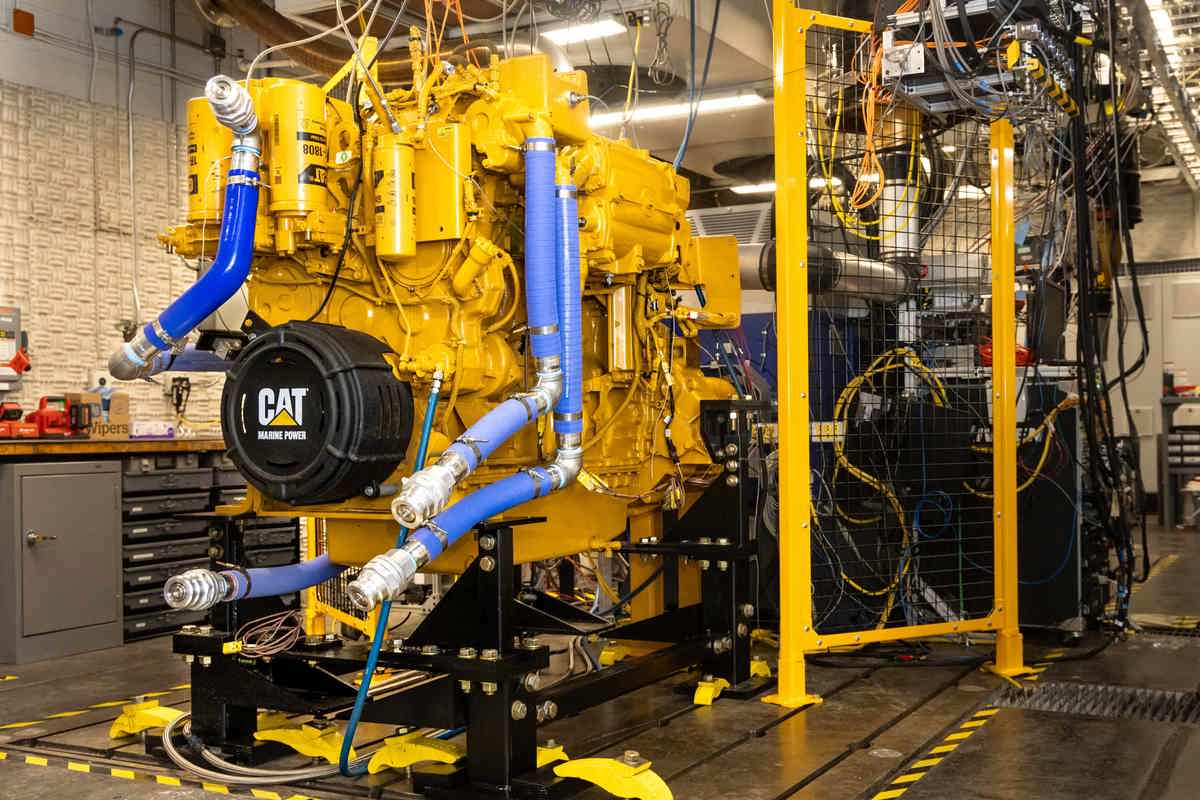Aiming for high pilot fuel ratio in upcoming methanol engines – Caterpillar Marine
Caterpillar Marine is targeting “high as possible” methanol-to-diesel pilot fuel ratio “in the widest operating band”, Will Watson, global product director at Caterpillar Marine told ENGINE.
 PHOTO: Caterpillar Marine's upcoming methanol dual-fuel engine. Oak Ridge National Laboratory
PHOTO: Caterpillar Marine's upcoming methanol dual-fuel engine. Oak Ridge National Laboratory
Caterpillar Marine, the marine unit of US-based engine maker Caterpillar, will conduct a field test of its methanol dual-fuel engine with Damen Shipyards Group in 2026.
The engine maker claims that it will target “the highest methanol substitution while meeting regulated emissions” in its methanol dual-fuel engine.
“Our design approach is to meet regulated emissions in both diesel-only mode as well as dual-fuel [methanol] mode. We are working toward the largest energy substitution of methanol while meeting emission standards,” Watson told ENGINE.
In methanol-powered combustion engines, a small amount of pilot fuel, like diesel, is needed for ignition. The use of pilot fuel is critical, as methanol burns slower than fossil marine fuels due to its low cetane number. Theoretically, the pilot fuel component usually accounts for 5% of the fuel mixture, with the remaining 95% being methanol, according to the classification society DNV.
“The larger the percentage of methanol that we can use in place of diesel will provide the maximum potential to reduce greenhouse gas emissions,” Watson added.
For instance, consider a 28-meter tugboat cruising at eight knots that requires 600 kilowatts (kW) of propulsion power. The company intends that methanol will provide more than 70% of the energy needed for the tug’s propulsion, instead of conventional fuels, he explained. Watson noted that methanol substitution can be increased even further when the engines operate at higher power levels.
“We know many customers who utilize our high-speed marine engines will have significant time in lower load ranges, so having only good performance at high loads won’t benefit them,” he said.
The dual-fuel engine can also run on conventional fuels and biofuel blends, apart from methanol. Biofuel blends, or HVO, can also be used as pilot fuel, Watson said.
Caterpillar Marine is seeing “general interest” across all vessel segments, some smaller segments are “leading the charge," Watson said. This includes offshore vessels, tugs, salvage and dredging vessels.
By Konica Bhatt
Please get in touch with comments or additional info to news@engine.online





